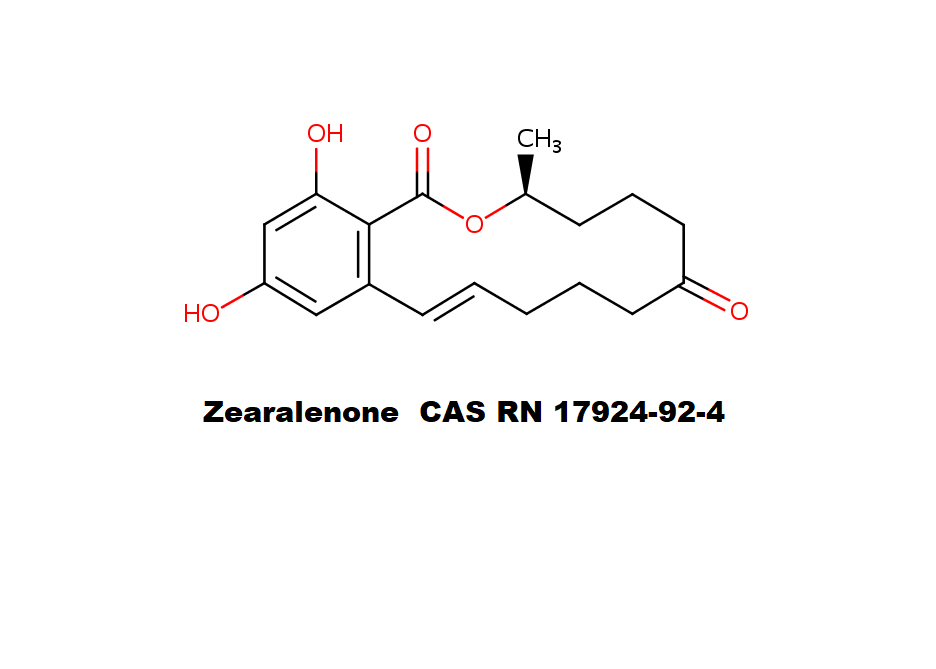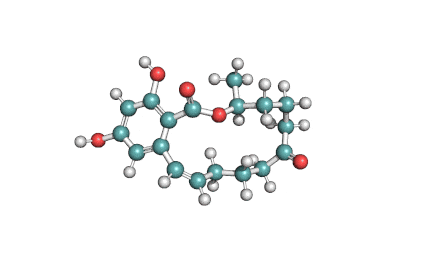Details
Specifications
Chemical identification
IUPAC : (3S,11E)-14,16-dihydroxy-3-methyl-3,4,5,6,9,10-hexahydro-1H-2-benzoxacyclotetradecine-1,7(8H)-dione
RTECS: DM2550000
Zearalenone is a natural estrogen, a mycotoxin from resorcylic acid lactone group.
Zearalenone is a non-steroidal estrogenic mycotoxin produced by several Fusarium spp. It has been implicated in numerous mycotoxicoses in farm animals, especially in pigs. Zearalenone is heat-stable and is found worldwide in a number of cereal crops, such as maize, barley, oats, wheat, rice, and sorghum (Kuiper-Goodman et al., 1987; Tanaka et al., 1988a) and also in bread (Aziz et al., 1997). Zearalenone was shown to be produced on corn by Fusarium isolates from Australia, Europe, and North America (Vesonder et al., 1991) and in New Zealand (diMenna et al., 1997), the Philippines, Thailand, and Indonesia (Yamashita et al., 1995). The occurrence of zearalenone in food and feed was also demonstrated in South America (Dalcero et al., 1997; Molto et al., 1997), Africa (Doko et al., 1996), China and the former USSR (Ueno et al., 1986). Fusarium isolates from bananas can also produce zearalenone
Further Information
Zearalenone is slightly soluble in hexane and progressively more in benzene, acetonitrile, dichloromethane, methanol, acetone. In water: 20 mg/L .
- Mycotoxin
- A resorcylic acid lactone
- Sexual reproduction in Fusarium is regulated by the fungal sex hormone zearalenone, which is known to be synthesized only by species of Gibberella zeae (Fusarium roseum)
The resorcylic acid lactones have estrogenic activity. Zearalenone and its derivates were used as veterinary anabolic or estrogen substitutes.
Warning or harmful
- Acute toxicity (oral, dermal, inhalation), category 4
- Skin irritation, categories 2, 3
- Eye irritation, category 2A
- Skin sensitization, category 1
- Specific target organ toxicity following single exposure, category 3
- Respiratory tract irritation
- Narcotic effects
Corrosive
- Skin corrosion, categories 1A, 1B, 1C
- Serious eye damage, category 1
Composition
Special Info
Other Fields





